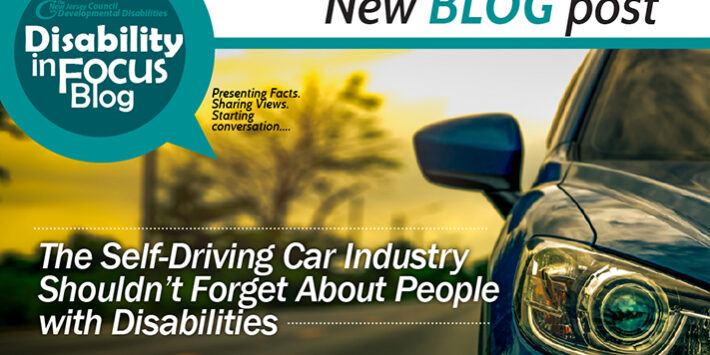By Jeremy Einbinder
Self-driving cars are set to be one of the key innovations of the 21st century, once they become widely available to the public. However, like all technological innovations, the needs of people with disabilities must be kept in mind. Millions of people with disabilities or restricted mobility still struggle to find reliable transportation that allows them to live independent lives.
The New York Times reports that roughly four million Americans depend on wheelchairs and 11 million more use a cane, walker or crutches. Although, estimates in a new unpublished study increased those numbers to 5.7 million and 15.7 million, respectively.
Self-driving cars once existed only in the minds of people optimistic about the future. But now, self-effort are here, and they could help alleviate the struggles of people with disabilities. That is, if our needs can be.
“Now, as the vehicle design and development continues, the entire industry has a rare opportunity to create a cutting-edge product that can be used by everyone, including wheelchair users, without the unfair and exorbitant cost and effort now required for customization. Automakers should seize that opportunity,” theTimes report read.
Transportation is a vital aspect of many people’s lives, whether they are disabled or not. Services like trains, taxis, and rides sharing programs provide important relief for people who do not always have access to a car. However, depending on one’s geographical location, their physical abilities and the landscape of their surroundings, public transportation may not be within walking(or rolling) distance.
The self-driving car (as long as it is accessible to sit in) could greatly help people who have difficulty with transportation participate in social activities and activities of daily living. This, of course, in addition to construction projects to make any given areamore accessible should be pursued. According to an article from the RudermanFoundation, mitigating transportation obstacles for individuals withdisabilities would enable jobopportunities for approximately 2 million individuals with disabilities, andsave $19 billion annually in healthcare expenditures from missedmedical appointments.
This is crucial. The foundation implies in this article that, due to transportation obstacles, Americans with disabilities are prone to ignore health issues. This is just one of the things that people with disabilities may be deprived. Others include vocational opportunities and social or community gatherings. This can ring especially true in places like the suburbs, where using a car to travel to public places is far more ubiquitous than walking.
The report continues, “There is a need for the disability community to organize, learn more about the technology, and enhance its advocacy efforts. And additionally for the technology developers to become better educated on the need and value ofdesigning their vehicles with the disability community in mind.”
The most important factor in making self-driving cars accessible for those with disabilities, the paper concluded, “is how the vehicles communicate to and receive input from the operating passenger.”
This remains true whether someone is a wheelchair user, blind, deaf, or has another impairment. All people deserve the ability to seamlessly travel in their communities as well as any able-bodied or neurologically typical person can.
Self-driving cars may soon become available to the average consumer, just as ride sharing is now. Unfortunately, accessibility accommodations may lag behind, just as they do with multiple technological and social advancements. Ride-sharing is not accessible to people of all abilities. Public transportation may or may not be widely available depending on where one lives.
More than 25 years after the passage of the Americans with Disabilities Act, countless so-called public places remain out of reach for many people with disabilities. They remain out of reach because we are not physically able to enter the building or because we are not able to travel to it. In addition to remedying all these issues, itis up to us in the disability community to make sure we’re not left behind again.







